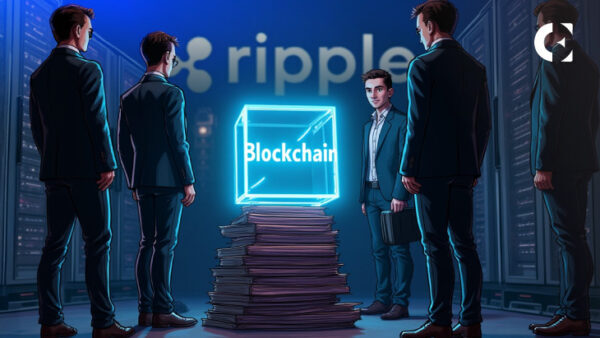- A German analyst says XRP has evolved into a banking bridge layer, not “just a coin.”
- RippleNet expansion and GTreasury uptake stoke debate over whether banks need XRP or can use stablecoins instead.
- ETF hopes vs U.S. government shutdown delays keep sentiment split as users weigh tech benefits against settlement design.
A German market watcher argued that XRP is no longer just a coin, but a bridge layer for bank-to-bank value transfer.
He pointed to Ripple’s GTreasury Management software, which the analyst says has been installed more than 13,000 times following a $1 billion acquisition, as evidence that Ripple’s stack is gaining real-world traction across financial institutions.
Positive News After Shutdown Could Boost XRP’s Demand
XRP’s evolution reflects an ongoing expansion in the RippleNet ecosystem, sparking a debate across the financial sector. The expansion includes a potential ETF approval, which the analyst thinks will boost XRP’s demand in multiple ways.
In the meantime, the current economic shutdown in the US is causing a delay in potential spot XRP ETF approvals by the SEC. However, the analyst believes positive news from there would add to an already growing bullish sentiment towards Ripple, with a direct effect on XRP. It would increase the overall expansion of RippleNet and boost demand for both the technology and the digital asset.
Related: SWIFT CIO Challenges Ripple’s Trustworthiness After SEC Lawsuit Resolution
Although XRP proponents and Ripple supporters are showing excitement about RippleNet’s expansion, some members of the broader fintech community are asking whether banks really need XRP for cross-border payments. While most of those involved in the debate applaud Ripple’s technology, they argue whether there is a need to use XRP to facilitate transactions.
The core debate: Do banks need XRP, or will stablecoins suffice?
A key objection in the fintech community is that banks can tap RippleNet without touching XRP, using stablecoins to avoid perceived price volatility. According to him, they can use stablecoins to achieve their goals while avoiding the risk of volatility associated with XRP.
Pro-XRP respondents counter that XRP settlements complete in seconds, which they argue neutralizes volatility risk at the point of exchange. They add that stablecoins inherit fiat constraints because they are issuer-dependent, non-neutral, and rely on fixed rather than dynamic liquidity.
By contrast, they say On-Demand Liquidity (ODL) sources liquidity in real time across venues, reducing counterparty and redemption risk and enabling scale for cross-border payment corridors.
Disclaimer: The information presented in this article is for informational and educational purposes only. The article does not constitute financial advice or advice of any kind. Coin Edition is not responsible for any losses incurred as a result of the utilization of content, products, or services mentioned. Readers are advised to exercise caution before taking any action related to the company.









